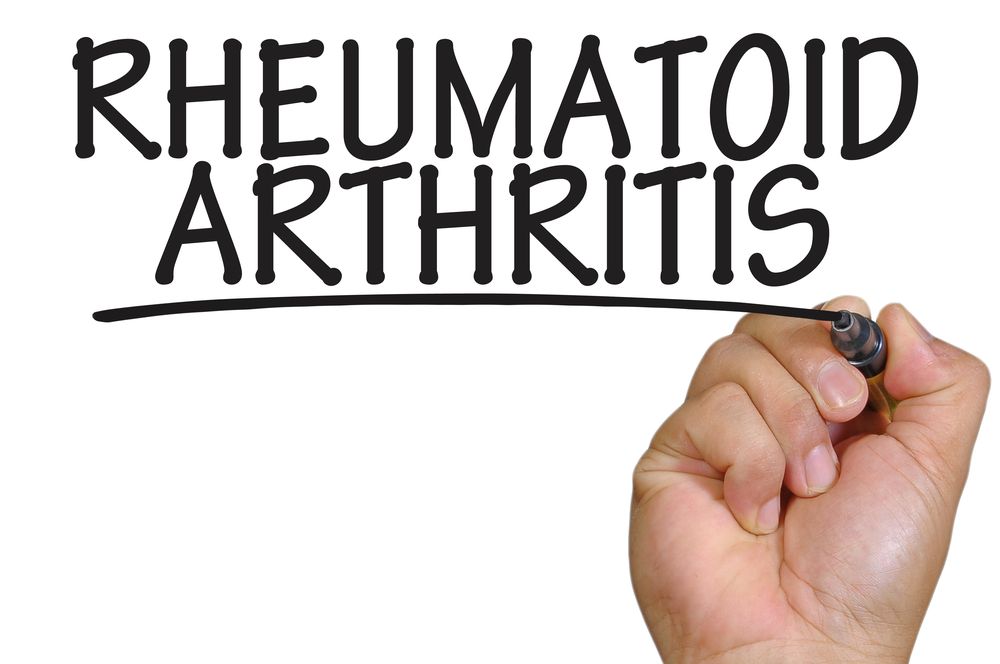Ultra-Low Rituximab Dose in RA Fails to Meet Non-Inferiority
Ultra-low doses of rituximab (Rituxan, MabThera) used as maintenance treatment for rheumatoid arthritis in patients who responded well to this agent did not show non-inferiority, but could nevertheless be considered in clinical practice, say researchers recently writing in The Lancet Rheumatology.
(©UnderverseShutterstock.com)

Ultra-low doses of rituximab (Rituxan, MabThera) used as maintenance treatment for rheumatoid arthritis in patients who responded well to this agent did not show non-inferiority, but could nevertheless be considered in clinical practice, say researchers recently writing in The Lancet Rheumatology.
Guidelines for rheumatoid arthritis, a condition which affects 0.5 percent to 1 percent of the population in Europe and North America, recommend treatment with biological disease-modifying antirheumatic drugs (DMARDs) if the response to conventional synthetic DMARDs is insufficient. As many treatment options for rheumatoid arthritis are costly, a major challenge is to ensure that treatment remains affordable and accessible. Dose-reduction of biological DMARDs, after patients have reached their treatment goal of low disease activity or remission, has been shown to be effective and safe.
Rituximab, a biological DMARD targeting CD20 on B cells, improves rheumatoid arthritis symptoms and can prevent disease progression. The U.S. Food and Drug Administration and European Medicines Agency recommend two doses of 1,000 mg rituximab (two weeks apart) every six months. However, several studies have shown clinical benefit with lower doses of the drug.
“We aimed to assess the difference in efficacy between two ultra-low doses of rituximab (500 mg and 200 mg) and a standard low dose (1,000 mg) of rituximab in patients with rheumatoid arthritis responding well to standard doses of rituximab,” wrote the authors of the study, led by Lise M Verhoef, M.Sc., of Sint Maartenskliniek in Nijmegen, Netherlands.
The REDO study included 142 rheumatoid arthritis patients (aged ≥18 years) responding well to rituximab who were randomly assigned to receive intravenous rituximab as one dose of either 1,000 mg (n=29), 500 mg (n=58), or 200 mg (n=55), respectively. The researchers compared ultra-low doses with a standard low dose (500 mg vs 1,000 mg at three months, followed by 500 mg vs 1,000 mg at six months, 200 mg vs 1,000 mg at three months, and 200 mg vs 1,000 mg at six months), using a non-inferiority margin of 0.60 on change from baseline in DAS28-CRP.
The 500 mg dose was non-inferior to 1,000 mg at three months (mean change from baseline in DAS28-CRP, −0.07, 95% CI −0.41 to 0.27) but not at six months (0.29, −0.08 to 0.65). Because of the hierarchical testing procedure, non-inferiority could not be tested for the 200 mg dose.
A total of 13 patients had serious adverse events, 10 percent each in the 1,000 mg and 500 mg groups, and 7 percent in the 200 mg group. The most frequently reported serious adverse events were cardiovascular. No deaths occurred. A significantly lower incidence of infections was seen in the ultra-low-dose groups compared with the standard dose group (1.24 infections per patient-year with the 1,000 mg dose vs 0.52 per patient-year with the 500 mg dose and 0.55 per patient-year with the 200 mg dose; rate ratio 0.42, 95% CI 0.21–0.83; p=0·013 for 500 mg vs 1,000 mg; 0.44, 0.22–0.88; p=0·019 for 200 mg vs 1,000 mg).
“Our study is the first randomized controlled non-inferiority trial to assess use of ultra-low-dose rituximab for continued treatment of patients with rheumatoid arthritis who are responding well to a standard dose of rituximab,” the authors wrote. “Although non-inferiority of the change in disease activity score after six months could not be shown, most patients maintained good disease control on ultra-low doses, with a non-significant increase in use of co-medication and a significantly lower incidence of infections.”
“In clinical practice, a strategy with one ultra-low dose of rituximab along with provision of other antirheumatic drugs in case of flare could be considered, weighing the risk of flare against the benefits of improved safety, shorter infusion time, and potential cost-savings,” the authors wrote.
Further analyses and a two-year observational extension are ongoing and should provide further insight into efficacy and safety.
REFERENCE
Lise M Verhoef, Nathan den Broeder, Rogier M Thurlings, et al. “Ultra-low doses of rituximab for continued treatment of rheumatoid arthritis (REDO study): a randomised controlled non-inferiority trial.” The Lancet Rheumatology. November 1, 2019. DOI:https://doi.org/10.1016/S2665-9913(19)30066-9